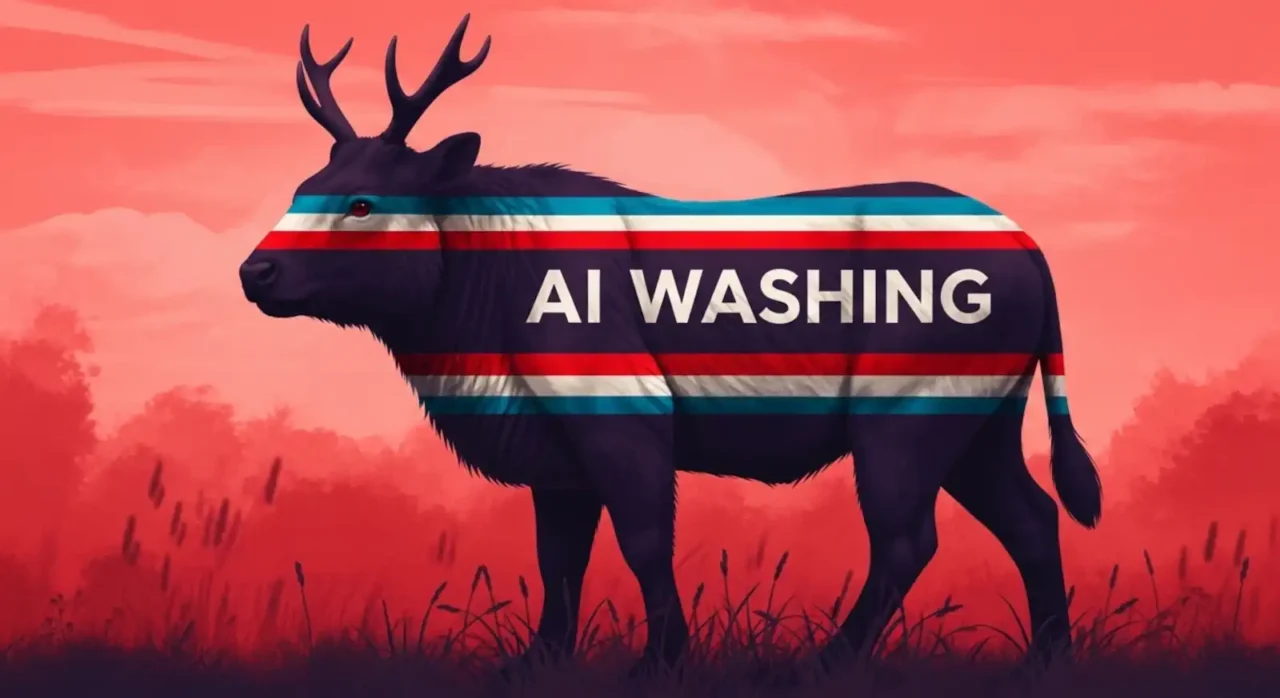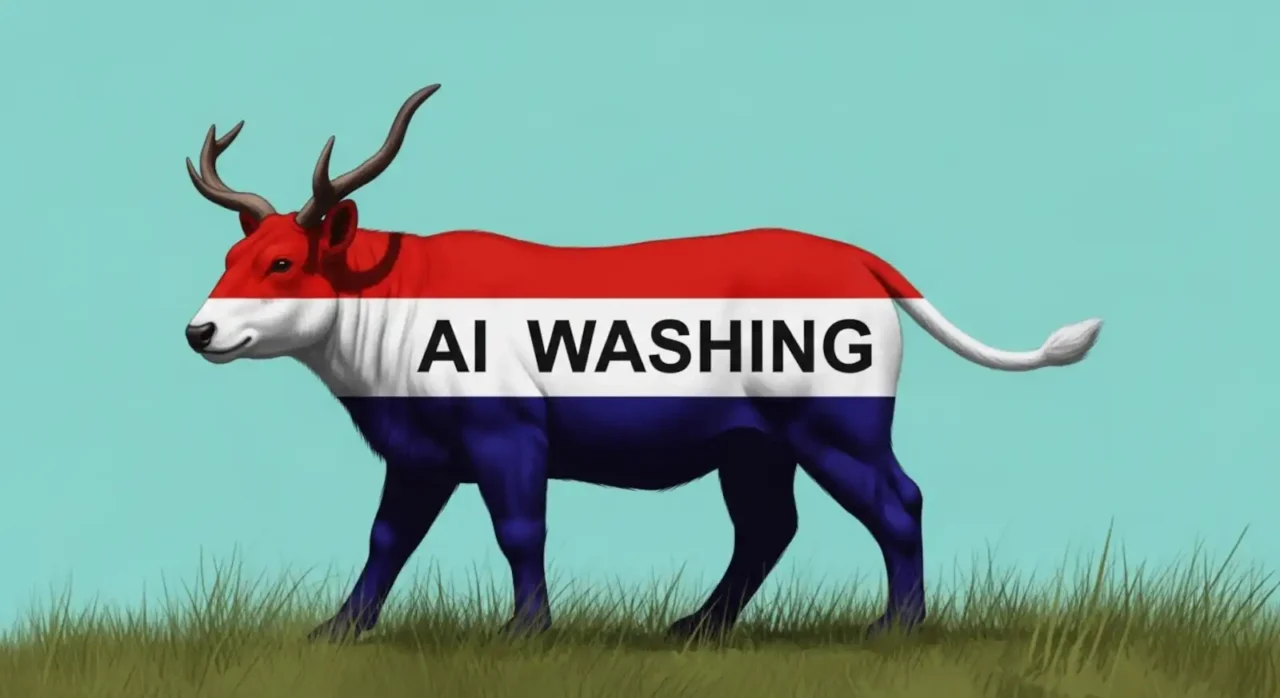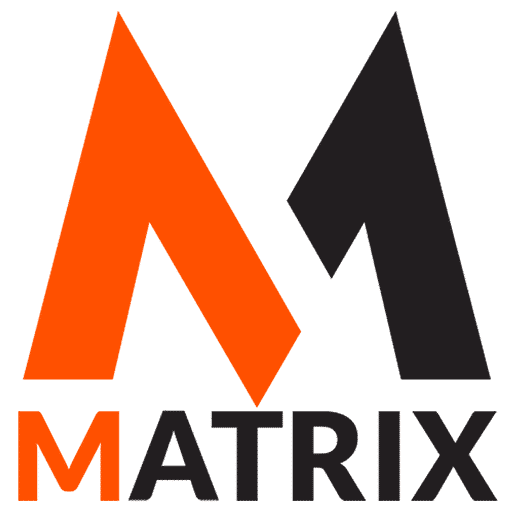AI Washing: The Great AI Deception: Why ‘AI-Powered’ Might Just Mean ‘Human-Powered with Extra Hype’
AI Washing: The Great AI Deception: Why ‘AI-Powered’ Might Just Mean ‘Human-Powered with Extra Hype’.
It was in a strategic marketing class in my MBA program back in Denver, Colorado, that I was introduced to artificial intelligence and marketing.
And then, in a moment that sent shivers down my spine (and probably yours too, if you’re a true marketing visionary), IBM’s Watson didn’t just play Jeopardy—it dominated it. That wasn’t just a game show win; it was a revelation.
It was the undeniable proof that true artificial intelligence could analyze, learn, and strategize at a level previously unimaginable. And that, CMOs, is the exact, electrifying power we can unleash on your marketing landscape.
Forget the tired automation of yesterday. We’re not talking about simple ‘if-then’ rules. We’re talking about generating truly autonomous marketing operations. Imagine your website acting as a fully empowered, intelligent sales force, closing deals seamlessly.
Or picture a sales representative, armed with real-time, predictive insights from an AI that understands every nuance of your customer journey.
This isn’t just a step beyond automation; this is a leap into the multi-modal future of sheer, unadulterated autonomous intelligence, designed to propel your business forward at speeds you never thought possible.
Introduction: The AI Hype vs. Reality Check

The relentless march of artificial intelligence is upon us, or so we are told.
From the disembodied voices inhabiting our smart speakers to the eerily prescient advertisements that stalk us across the digital landscape, AI promises a future sculpted by effortless efficiency and brimming with unparalleled intelligence.
We are presented with a vision of seamless automation, hyper-personalization, and insights previously beyond our grasp.
But a nagging question persists: What if a significant portion of this proclaimed “AI magic” is merely a mirage, a cleverly constructed illusion designed more to impress than to innovate truly?
What if beneath the veneer of sophisticated algorithms lies something far less revolutionary – a potent blend of astute marketing and… well, not much else?
Enter the shadowy realm of “AI washing.”
This increasingly prevalent tactic represents a calculated distortion of reality, where companies deliberately exaggerate, misrepresent, or, in some cases, outright fabricate their utilization of artificial intelligence in their products, services, or internal operations.
Think of it as the tech world’s equivalent of “greenwashing,” where corporations deceptively promote their environmental credentials while often engaging in practices that are anything but sustainable.
AI washing is the art of conjuring the image of cutting-edge AI capabilities, even when the underlying reality is far more prosaic.
The core problem with this deceptive practice extends far beyond a simple case of inflated marketing claims. It represents a fundamental erosion of trust, a distortion of the market landscape, and a potentially catastrophic misallocation of resources for businesses genuinely striving to leverage the transformative power of authentic AI.
In a world increasingly reliant on data-driven decision-making, the contamination of the information ecosystem with AI-washed products and services can have far-reaching and detrimental consequences.
What Exactly IS AI Washing? (Beyond the Buzzwords)
At its heart, AI washing is the practice of adorning something with an “AI-powered” label when its actual intelligence quotient barely surpasses that of a sophisticated, albeit very fast, calculator. It’s the digital equivalent of putting racing stripes on a family sedan and claiming it can now compete in Formula One.
The anatomy of AI washing often involves a carefully orchestrated series of deceptive maneuvers, including:
Vague and Ambiguous Language:
Employing buzzwords like “intelligent,” “smart,” and “next-gen” without providing any concrete explanation of how these attributes manifest in the product or service. It’s the rhetorical equivalent of promising the moon without revealing the spacecraft’s blueprints.
Overstating Algorithmic Capabilities:
This implies that a basic, off-the-shelf algorithm constitutes a highly sophisticated machine learning model capable of groundbreaking insights and autonomous decision-making. This is akin to claiming that a simple linear regression is a deep neural network capable of solving world hunger.
Minimizing Human Input:
Subtly obscuring or outright denying the significant role that human workers play in the operation of so-called “AI-powered” systems.
This is the classic “wizard behind the curtain” phenomenon, where humans are performing the heavy lifting while the AI receives all the accolades.
Think of the self-checkout lanes at your local grocery store, deceptively sold as automated efficiency when in reality they require constant human intervention to untangle barcode mishaps and override system errors.
Rebranding Existing Technology:
Simply repackaging and relabeling existing, well-established technologies as “new AI,” without any fundamental changes to their underlying functionality or capabilities.
It’s akin to slapping a fresh coat of paint on an aging building and declaring it a revolutionary architectural masterpiece.
But why would companies engage in such seemingly duplicitous behavior?
The answer, unsurprisingly, often boils down to the allure of financial gain. The current fervor surrounding AI has created a potent market incentive to capitalize on the widespread excitement, attract eager investors (AI startups, for instance, reportedly enjoy a funding premium of 15-50% compared to their non-AI counterparts), justify inflated prices for products and services, and simply project an image of being at the forefront of technological innovation.
In the Darwinian landscape of the modern business world, appearing technologically advanced, even if superficially, can provide a significant competitive advantage.
A Blast from the Past: History Repeats Itself
For marketing managers, this historical parallel is critical: The dot-com bubble saw companies prioritize perception over substance.
We were selling Sun servers on payment plans to “businesses” that turned out to be little more than empty offices with fancy Herman Miller chairs. This era taught us a harsh lesson about the difference between perceived value (based on hype) and actual, sustainable business models. AI washing presents a similar risk today.
The phenomenon of AI washing, while seemingly novel, is a recurring theme in the history of technological innovation. We are, in essence, witnessing a modern iteration of a well-worn narrative, a cyclical pattern of hype, exaggeration, and eventual disillusionment.
The most immediate parallel can be drawn to the Dot-Com Bubble of the late 1990s and early 2000s. During this period, companies, regardless of their actual business model or internet strategy, simply appended “.com” to their names in a desperate attempt to inflate their perceived value and attract investor capital.
The underlying business fundamentals were often ignored, overshadowed by the intoxicating promise of the burgeoning internet.
The inevitable bursting of the bubble served as a stark reminder of the dangers of irrational exuberance and the importance of grounding technological innovation in tangible value.
More broadly, technology adoption often follows a predictable “Hype Cycle,” a concept popularized by the research firm Gartner.
This cycle typically begins with a “Technology Trigger,” followed by a rapid ascent to the “Peak of Inflated Expectations,” a period characterized by unrealistic optimism and widespread hype.
As the limitations of the technology become apparent, the cycle descends into the “Trough of Disillusionment,” marked by disappointment, skepticism, and even outright rejection.
Eventually, the technology matures and finds its appropriate niche, leading to the “Slope of Enlightenment” and, ultimately, the “Plateau of Productivity,” where its benefits are realized sustainably and pragmatically.
We are currently, arguably, riding the “Peak of Inflated Expectations” in the context of AI. The sheer volume of media coverage, the extravagant claims made by vendors, and the widespread adoption of the term “AI” in marketing materials all point to a level of hype that is unsustainable in the long run.
This creates a fertile environment for AI washing, as companies scramble to align themselves with the prevailing narrative, even if their actual AI capabilities are limited or non-existent.
It’s also worth noting that AI, in various forms, has been gradually infiltrating the marketing landscape for decades. Early applications included basic data analysis and customer segmentation techniques dating back to the 1950s.
Over time, these evolved into more sophisticated recommendation engines (think Amazon’s personalized product suggestions) and programmatic advertising platforms.
However, the defining difference between these earlier applications and the current AI frenzy lies in the scale and intensity of the hype surrounding the technology.
The promises are grander, the expectations are higher, and the potential for disillusionment is correspondingly greater.
The Ugly Truth: Why AI Washing Hurts Everyone (Current Opinions & Controversies)

The consequences of AI washing extend far beyond mere marketing puffery. It represents a systemic threat to the integrity of the AI ecosystem, with ramifications for consumers, investors, and genuine innovators alike.
The most immediate and damaging consequence is the erosion of trust.
When consumers and businesses are repeatedly exposed to products and services that fail to deliver on their AI-powered promises, a sense of cynicism and skepticism begins to permeate their perception of the technology as a whole.
When the inevitable hype bubble bursts, as it always does, the resulting backlash can be severe, leading to a widespread rejection of even the most genuinely innovative AI solutions.
Furthermore, AI washing distorts the market landscape, creating an uneven playing field for legitimate AI innovators. Companies that invest significant time, resources, and expertise in developing truly groundbreaking AI solutions often struggle to compete with companies that are simply making empty claims and leveraging AI buzzwords for marketing purposes.
This can stifle real progress and discourage further investment in genuine AI research and development.
Most concerningly, regulators are beginning to take notice. The U.S. Securities and Exchange Commission (SEC) and the Federal Trade Commission (FTC) have both explicitly warned that misrepresenting the use of AI can constitute a violation of existing laws.
These agencies are actively scrutinizing companies’ AI claims and are prepared to take enforcement actions against those that are found to be engaging in deceptive practices.
Recent examples of regulatory scrutiny include:
- Delphia and Global Predictions: Two investment firms were fined a combined $400,000 in March 2024 for making false and misleading claims about their use of AI in their investment strategies.
- Amazon’s “Just Walk Out” Technology: While heavily promoted as a fully AI-driven checkout experience, reports revealed that the system relied on over 1,000 human workers manually reviewing transactions.
- Coca-Cola’s Y3000: This limited-edition beverage, marketed as being “co-created with AI,” faced accusations of AI washing due to a lack of transparency and limited evidence of actual AI involvement in its development.
- Joonko CEO: The CEO of Joonko was charged by the SEC in June 2024 for allegedly defrauding investors by fabricating AI testimonials – a classic case of “old school fraud using new school buzzwords.”
Beyond regulatory risks, companies that buy into AI-washed solutions often find that they simply do not deliver the promised benefits.
This can lead to operational inefficiencies, wasted resources, frustrated customers, and a significant dent in their competitive edge.
The promise of enhanced efficiency and automation turns into a quagmire of manual intervention and unmet expectations.
Finally, the inherent complexity of AI, often referred to as the “black box” problem, is further exacerbated by AI washing.
The lack of transparency and explainability surrounding AI algorithms makes it difficult to understand how they work and why they make the decisions they do.
AI washing adds another layer of opacity, making it nearly impossible to distinguish between genuine AI and superficial imitation.
AI Marketing Team Salary & Structure Calculator
Plan and budget for the talent required to succeed with AI.
Step 1: Select Your Company’s Maturity Level
Step 2: Customize Your AI Marketing Team
Select a maturity level to see recommended roles.
Budget Summary
Total Team Members (FTE)
0
Estimated Annual Salary
$0
Selected Roles:
- No roles selected.
Salary data is based on industry averages and should be used for estimation purposes. Actual salaries may vary based on location, experience, and other factors.
Spotting the Fakes: Your AI Washing Survival Guide

Navigating the murky waters of AI claims requires a healthy dose of skepticism and a discerning eye. Here’s a survival guide for avoiding the pitfalls of AI washing:
Demand Transparency:
Don’t simply accept the “AI-powered” label at face value. Insist on a detailed explanation of how the technology is AI-powered, what specific AI models are being used, and what role they play in the overall system.
Look for Concrete Results:
Seek out case studies, measurable metrics, and real-world examples that demonstrate the tangible benefits of the AI solution. Vague promises of future capabilities should be treated with extreme caution.
Verify the Technical Foundation:
Assess the company’s technical expertise and capabilities. Do they have a strong team of AI engineers? Can they articulate how their AI solution addresses specific business problems in a clear and technically sound manner?
Beware of Outlandish Claims:
If a claim sounds too good to be true, it probably is. Be especially wary of claims of flawless performance, complete automation without human intervention, or revolutionary breakthroughs that defy established scientific principles.
Assess Learning Capability:
Genuine AI systems are designed to learn and improve over time. If the system is simply following pre-programmed instructions without adapting to new data or experiences, it’s likely not a true AI solution.
Is It Real AI or Just AI Washing?
Your Guide to Choosing a Legitimate AI Marketing Platform
1. Focus on YOUR Problem, Not Their Platform
Don’t ask what AI they have. Ask how they solve your specific business challenge. A real AI solution provides concrete answers, not vague promises.
GOOD: “Our AI predicts churn by analyzing user behavior and recommends a specific retention campaign.”
RED FLAG: “Our AI-powered platform provides smart insights to enhance customer relationships.”
2. Demand Specifics and Proof
Force them to go beyond buzzwords. A legitimate vendor can explain exactly how their AI works, what data it uses, and how it improves over time.
- Ask: What specific data does your model train on?
- Ask: How does the system learn from our campaign results?
- Request: Show me a case study with measurable results (e.g., 30% reduction in CPL).
3. Differentiate True AI from Basic Automation
Many platforms label simple “if-then” rules as AI. Understand the difference to avoid paying a premium for basic automation.
Basic Automation
Follows pre-set static rules. Example: IF cart is abandoned, THEN send email.
True AI
Makes adaptive predictions. Example: Predicts the best time and offer to send to prevent cart abandonment.
4. Look for Tangible Outputs
Real AI gives you actionable outputs, not just pretty dashboards. It should provide specific recommendations you can implement immediately.
5. Investigate the Team
Check their ‘About Us’ page. A company serious about AI will have Data Scientists and Machine Learning Engineers on staff, not just marketers.
VI. The Future is (Hopefully) Fairer: What’s Next for AI and Marketing

Despite the current challenges posed by AI washing, the future of AI in marketing is, ultimately, bright. Growing awareness of the issue, coupled with increasing regulatory pressure and a growing emphasis on ethical AI practices, is paving the way for a more transparent and accountable ecosystem.
Expect to see regulators worldwide adopt a more aggressive stance towards AI washing. The EU AI Act, for example, is setting a global benchmark for ethical AI, mandating transparency, accountability, and human oversight in the development and deployment of AI systems. More fines, more lawsuits, and more public scrutiny are undoubtedly on the horizon.
Transparency will become increasingly paramount. We will see more widespread adoption of clear labeling practices for AI-generated content, from advertisements to chatbot interactions. Explainable AI (XAI) will emerge as a crucial requirement, making AI decision-making processes more understandable and interpretable to human users.
Ethical AI will transition from a mere compliance checkbox to a core brand value. Companies that genuinely embrace ethical AI practices, focusing on fairness, bias mitigation, data privacy, and human oversight, will build deeper consumer trust and gain a significant competitive advantage in the long run.
As consumers become more AI-educated, they will be better equipped to identify deceptive claims and demand genuine innovation. This will force companies to be more transparent and accountable in their AI marketing efforts.
Despite the problems caused by AI washing, the market for genuine AI in marketing is projected to experience exponential growth in the coming years, from tens of billions of dollars today to hundreds of billions within a few years.
This growth will be driven by AI’s ability to deliver real and measurable benefits, including enhanced efficiency, hyper-personalization, deeper customer insights, and a significant return on investment.
Stay in the Loop with The Prompt
Join our newsletter and get cutting-edge marketing and AI insights straight to your inbox.

